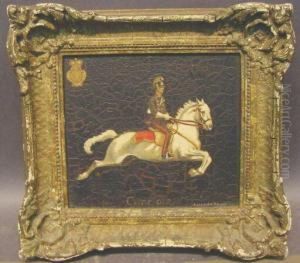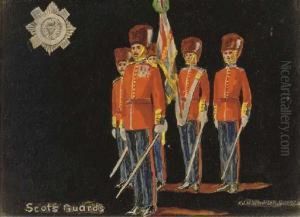Francois Joseph Windisch Graetz Paintings
François Joseph Windisch-Grätz, also known as Franz Josef Graf Windisch-Graetz, was an Austrian painter, born on April 11, 1781, in Vienna, Austria. He is not widely known outside of specialist circles, and his work primarily falls into the Biedermeier period, a style that is recognized for its simple yet elegant portrayal of middle-class life in the German-speaking countries during the early to mid-19th century. Windisch-Grätz's works are characterized by their attention to detail, subdued palette, and often domestic or bourgeois subjects.
Windisch-Grätz's artistic education and career trajectory are not extensively documented, but he was active during a period when Vienna was a significant cultural center in Europe, fostering various forms of artistic expression including music, visual arts, and literature. His work reflects the Biedermeier sensibility, which was a reaction to the excesses of the previous Empire style and the political turmoil of the Napoleonic wars. It focused on the beauty of the ordinary and the importance of family and home life.
François Joseph Windisch-Grätz's paintings included portraiture as well as genre scenes, which depicted everyday activities. However, he struggled with financial difficulties throughout his career, which was a common issue for many artists of his time. Despite the challenges, he continued to produce artwork that was appreciated for its craftsmanship and detail.
Windisch-Grätz died on May 23, 1849, in Vienna, leaving behind a modest but meaningful body of work that contributes to our understanding of the Biedermeier aesthetic. His art has been preserved and studied in the context of Austrian art history, although it does not enjoy the same level of recognition as some of his contemporaries. Today, his works can occasionally be found in Austrian museums and private collections. They provide us with a glimpse into the intimate world of 19th-century Viennese society, reflecting the values and sensibilities of the Biedermeier era.

